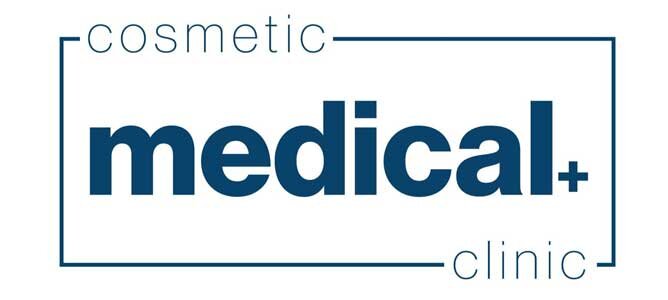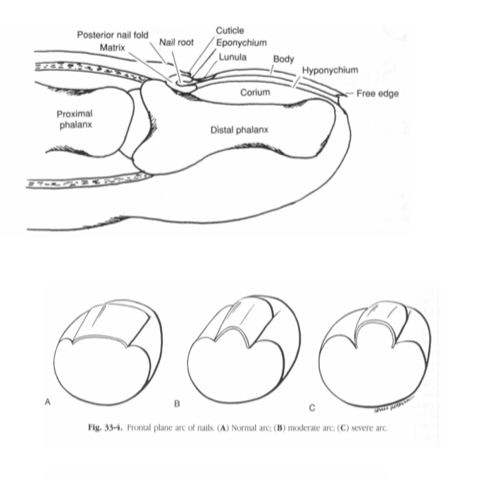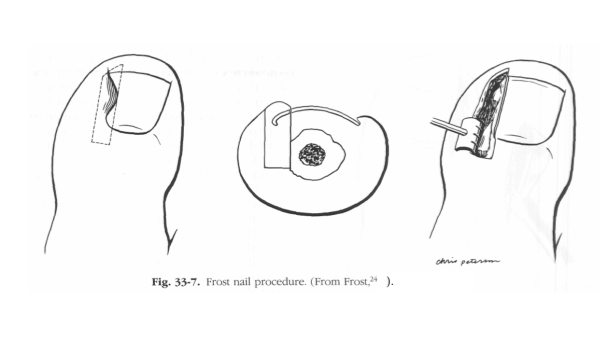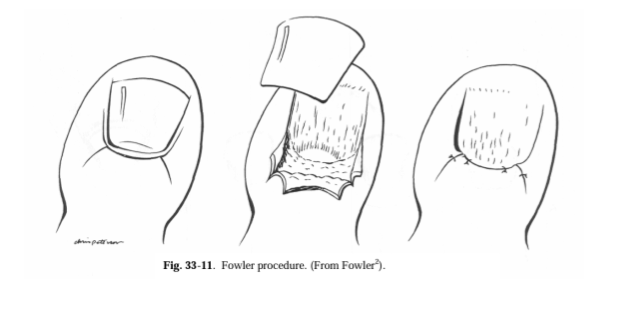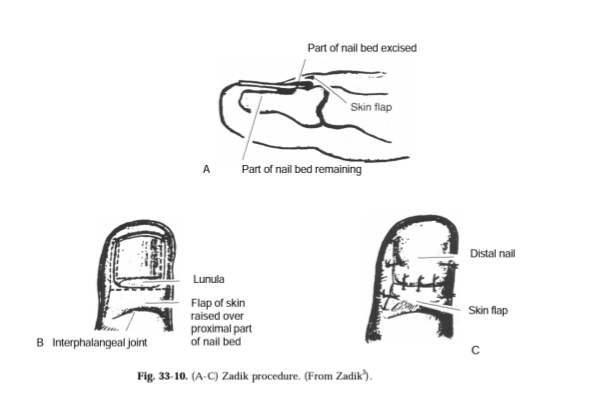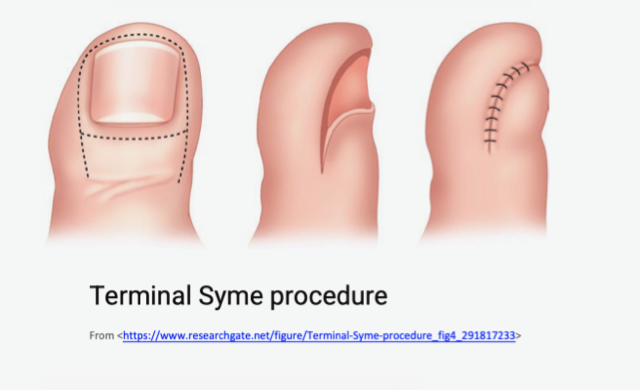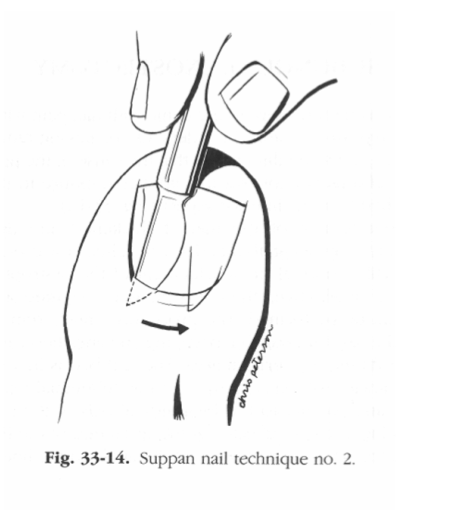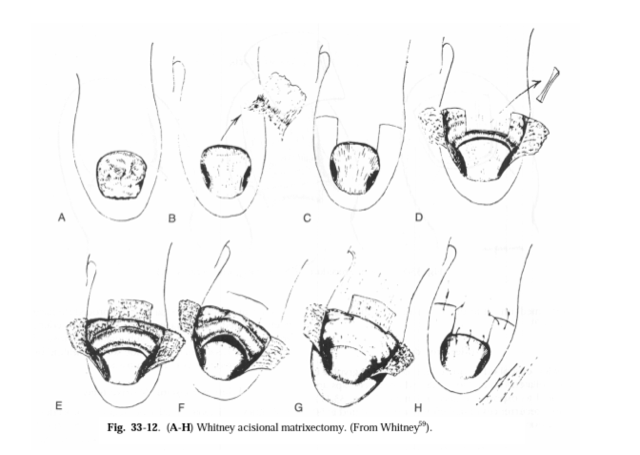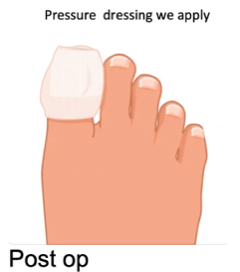
Ingrown Toenail
what are ingrown toenails
Ingrown toenail, also known as onychocryptosis or unguius incarnatus, is the most common nail problem encountered in podiatry, general family practice, and dermatology. An ingrown toenail occurs when the nail plate grows into the periungual skin and causes inflammation and infection.
Often you can take care of ingrown toenails on your own. If the pain is severe or spreading, your health care provider can take steps to relieve your discomfort and help you avoid complications of ingrown toenails.
Symptoms include:
Pain and tenderness
Inflamed skin
Swelling
Infection
when to see a doctor
See your health care provider if you:
Experience severe discomfort in a toe, pus or inflamed skin that seems to be spreading
Have diabetes or another condition that causes poor blood flow to the foot
causes
Causes of ingrown toenails include:
Wearing shoes that crowd the toenails
Cutting toenails too short or not straight across
Injuring a toenail
Having very curved toenails
Nail infections
Diabetes
Hyperhidrosis xs sweating
risk factors
Factors that increase your risk of ingrown toenails include:
Being an adolescent, when feet tend to perspire more, which softens the nail and skin
Having nail care habits that encourage the nail to grow into the skin, such as cutting the nails too short or rounding the corners
Having a reduced ability to care for your nails
Wearing shoes that constrict the toes
Participating in activities, such as running and kicking, that put your toes at risk of injury
Having a condition, such as diabetes, that causes poor blood flow
complications
Complications can be especially severe if you have diabetes, which can cause poor blood flow and damaged nerves in the feet. So a minor foot injury — a cut, scrape, corn, callus or ingrown toenail — may not heal properly and become infected.
prevention
To help prevent an ingrown toenail:
Trim your toenails straight across. Don't curve your nails to match the shape of the front of your toe. If you get a pedicure, ask the person doing it to trim your nails straight across. If you have a condition that causes poor blood flow to the feet and you can't trim your nails, see a podiatrist regularly to have your nails trimmed.
Keep toenails at a moderate length. Trim toenails so they're even with the tips of your toes. If you trim your toenails too short, the pressure from your shoes on your toes may direct a nail to grow into the tissue.
Wear shoes that fit properly. Shoes that place too much pressure on your toes or pinch them may cause a nail to grow into surrounding tissue. If you have nerve damage to the feet, you may not be able to sense if your shoes fit too tightly.
Wear protective footwear. If your activities put you at risk of injuring your toes, wear protective footwear, such as steel-toed shoes.
Check your feet. If you have diabetes, check your feet daily for signs of ingrown toenails or other foot problems.
ingrown toenail classification
Onychocryptosis (ingrown toe nail) stages:
Stage 1
Locally infected nail
No onycholysis / loosening nail
Local irritation of the nail fold
No granulation tissue / lump of skin growing
First episode
Stage 2
Increased nail border infection
No onycholysis
Pus and granulation
First episode
Stage 3
Granulation/pus
Partial Onycholysis
Recurrent episodes
Stage 4
Recurrent
Partial Onycholysis single border
Infected
Delay matrixectomy
Stage 5
Recurrent
Onycholysis bilaterally + nail plate
All Infected
Delay matrixectomy / surgery

treatments
Grade 1
Saline soaks and apply polysporin triple
Dr Scholl's ingrown toe nail kit
Taping
Lift nail with cotton buds soaked in collodion
Grade 2
Add oral antibiotics
Use Gutter splints
Grade 3
Surgery Radical wedge with modifications
Grade 4
Oral meds and Fucidin HC then Suppan and modified radical wedge
Grade 5
Antibiotics then Suppan with bilateral modified wedge or if patient demands it modified Terminal Syme
medical treatment:
Cotton bud to lift nail or use dental floss
Collodion is a flammable, syrupy solution of nitrocellulose in ether and alcohol. There are two basic types: flexible and non-flexible. The flexible type is often used as a surgical dressing or to hold dressings in place. When painted on the skin, collodion dries to form a flexible nitrocellulose film.
Separating the distal anterior tip and lateral edges of an ingrown toenail from the adjacent soft tissue with a wisp of absorbent cotton coated with collodion gives immediate relief of pain and provides a firm runway for further growth of the nail.
Soak the foot in warm water and Epsom salts twice daily.
Keep the foot dry the rest of the time.
Gently lift the edge of the nail and place some cotton or dental floss between the nail and the skin.
Use an antibiotic cream and a bandage.
Wear roomy shoes or sandals.
Taping the nail. With this method, your health care provider pulls the skin away from the ingrown nail with tape.
Placing a gutter splint under the nail. With this method, your health care provider numbs the toe and slips a tiny slit tube underneath the embedded nail. This splint stays in place until the nail has grown above the skin edge. This method helps ease the pain of an ingrown nail as well.Pushing a plastic gutter between the nail edge and the ulcer bed is all that is necessary cyanoacrylate glue heps attach the gutter to the nail. It can be considered an initial treatment for most patients with mild ingrown toenail. However, this conservative method may not be the first choice for cases with soft-tissue overgrowth or extensive granulation tissue.
surgical treatments:
Wedge resection. Removal of a portion of the toenail to prevent it from digging into the skin. This procedure is also called a partial nail avulsion.
Partial nail avulsion with 80% TCA trichloroacetic acidmatricectomy has low rates of postoperative morbidity and high rates of success with less pain as opposed to using Sodium hydroxide or Phenol which is more toxic and painful.
Toenail removal. A doctor may decide to remove the entire toenail. Removing the whole nail makes it more likely that the nail will grow back misshapen or deformed, which can increase the risk of future ingrown toenails. It can take up to 18 months for the nail to regrow fully. This procedure is also called complete nail plate avulsion.
Surgery on the tip of the toe. If other surgeries are unsuitable for a person, or previous procedures have failed, a doctor may remove and reshape the soft tissue at the tip of the toe.
Matrixectomy. This procedure may be necessary if nail removal or wedge resection fails. It involves the removal of the nail bed in addition to the nail.
-
PNA surgery permanently removes the side of the nail that is causing damage to the skin. It is a quick and routine procedure, normally used in simple cases of ingrown toenails that can’t be resolved with conservative treatments. It’s also the preferred method as the majority of the nail can be left attached.
Benefits
Quick procedure – 45 to 60 minutes
A normal-looking nail is left after healing
98% success rate
Fixes the issue permanently
Quick recovery time
-
TNA surgery permanently removes the entire nail, normally carried out only when a severely damaged or thickened toenail causes recurring problems that the more simple PNA surgery will not fix. This is not the preferred treatment, but in rare cases, it can be necessary to avoid future problems.
Benefits
A permanent solution for the nail, which won’t grow back
98% success rate
simple and quick procedure – 45 to 60 minutes
Rapid recovery rates
surgery preparation
So you’ve had your pre-surgery assessment and your surgery date is scheduled – what do you need to do before the day?
Arrange for someone to drop you off, or book a taxi
Take enough time off work – we recommend a period of 48 hours of limited weight-bearing after the surgery
We advise the use of open-toe shoes for a week after the procedure
If your job requires safety footwear then this period can be reduced to 48 hours
Have a meal before your surgery
Bring open-toe shoes to wear after the procedure
Mention all known medical allergies during your assessment
Provide an emergency contact to the clinic
Stay off YouTube! If you need more information or have questions, simply ask Dr. Morison
surgery aftercare
When you leave the clinic after your surgery, we will provide you with the dressings to keep your toe clean and healing well and information about how to apply them effectively. We will also schedule a follow-up appointment within 48 hours to ensure a successful post-surgery recovery. You’ll notice the difference in your ingrown toenail before and after surgery. There are some important things to keep in mind after your surgery:
You won’t be able to drive home, so book a taxi or ask someone to take you, driving with the local anaesthetic still active is not advisable
We will apply the first dressing, however, it’s quite normal that some bleeding can become visible after the procedure
Leave the dressing intact and apply another over the first, then rest and elevate your foot above hip-height
Keep the toe dry and clean until your first dressing-change appointment
That first dressing will be quite bulky, so make sure you wear open-toe shoes that can accommodate a little extra
Sometimes patients experience a little pain and discomfort after the local anesthetic wears off so you can take paracetamol for the pain
If the pain is severe, please contact the clinic immediately
Attend your free follow-up appointments until your podiatrist discharges you
Avoid wearing tight-fitting shoes that put pressure on the toe
Avoid weight-bearing and strenuous activity (including the gym and weight-lifting) for two weeks after your surgery
follow up appointments
You will have a follow-up appointment with Dr. Morison after 48 hours, and this is also when you’ll have your first dressing change. Your first dressing will be removed and the toenail will be flushed with saline solution and an antiseptic dressing applied to ensure good healing. You’ll also receive a complimentary pack of dressings as well as clear instructions on how to apply them to avoid toenail fungal infection.
Until Dr. Morison discharges you, weekly reviews are necessary to monitor healing and recovery – and it is all part of our inclusive and friendly surgery package. In order to achieve the fastest and most effective healing possible, and avoid post-surgery complications, we ask all our patients to attend each of their planned appointments.
surgery recovery
Nail avulsion surgery has a 98.5 per cent success rate, but in the rare case that the surgery is unsuccessful, we will organise to re-do the procedure at no extra cost to you.
Depending on your medical history and whether there is an infection due to the ingrown toenail, healing can vary from person to person.
Most patients can return to work after 48 hours of rest, especially if they take all the advised post-surgery steps.
Full healing of the surgical site can take between two to six weeks, and in some cases longer. The most common post-surgery complication is infection, especially if there was an infection present before the procedure. We will help you treat any infection with oral antibiotics.
We work to give our patients the best cosmetic outcome possible, particularly in the case of partial nail avulsion surgery (where a small section of the nail is removed). For larger toes, the change in size and shape is unlikely to be very noticeable, although smaller nail plates may be more affected. If you have concerns about how your toe will look post-operation, talk to your podiatrist about this during your pre-surgery assessment.
contradictions
Dr. Morison can perform ingrown toenail surgery on most patients, and the procedure is quick and safe, however, we do not recommend surgery if the following applies to you:
You are pregnant or breastfeeding
You have diminished blood supply to your feet (Peripheral Vascular Disease)
You are allergic to local anaesthetic
Your toenail is severely infected – we advise a one to two-week course of antibiotics to ensure the surgery is as effective as possible
side effects
The most common side-effect of ingrown toenail surgery is pain. With the majority of patients this is mild and can be managed with over-the-counter painkillers like paracetamol.
Post-operative infections can also be present, normally within the first few days after the procedure. These are normally caused by bacteria (Staphylococcus aureus) or fungus (Candida).
On rare occasions the surgery is not as effective as desired and ingrown toenails can re-occur.

Surgical Procedures performed by Dr. Morison depending on the individual needs:
Winograd procedure
Frost nail procedure
Fowler procedure
Zadick procedure
Lapidus procedure
Terminal Syme procedure
Suppan nail technique
Whitney Acisional Matrixectomy procedure
Kaplan ProcedureTerminal Syme procedure
These are all different versions of the same basic procedure depending on the classification of the disorder. Dr. Morison uses a combination of excision cautery and suturing to get the best outcome.
surgery costs
Price to be quoted based on procedure being done. Most commonly the pricing is $200 per side/toe.
local anesthetic
Ropivacaine or Lidocaine and bupivocaine; produces immediate local numbness and continues working up to 6 hours.

ready to book an appointment?
If you are experiencing discomfort in a toe or have inflamed skin on the foot, book a consultation at our clinic.
